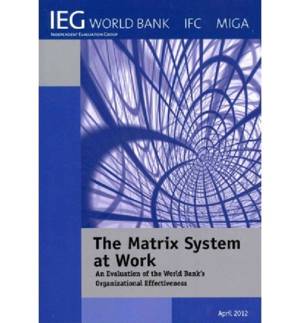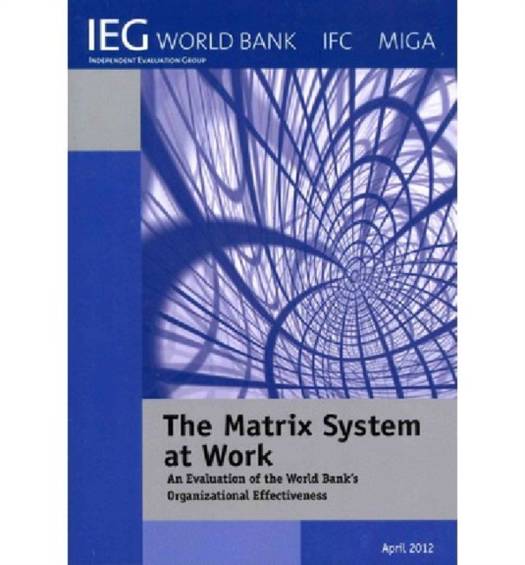
Bedankt voor het vertrouwen het afgelopen jaar! Om jou te bedanken bieden we GRATIS verzending (in België) aan op alles gedurende de hele maand januari.
- Afhalen na 1 uur in een winkel met voorraad
- Gratis thuislevering in België vanaf € 30
- Ruim aanbod met 7 miljoen producten
Bedankt voor het vertrouwen het afgelopen jaar! Om jou te bedanken bieden we GRATIS verzending (in België) aan op alles gedurende de hele maand januari.
- Afhalen na 1 uur in een winkel met voorraad
- Gratis thuislevering in België vanaf € 30
- Ruim aanbod met 7 miljoen producten
Zoeken
The Matrix System at Work
An Evaluation of the World Bank's Organizational Effectiveness
World Bank Publications, The World Bank
€ 50,95
+ 101 punten
Omschrijving
The 1997 Bank reforms that introduced the matrix management concept aimed to adapt the organization to changing circumstances and address concerns among external stakeholders about the role of aid in development. The reforms were motivated largely by widespread recognition that the Bank's development programs were excessively driven by a culture of lending, with insufficient attention to client needs and the quality of results, which are crucial to development effectiveness. A previous round of reforms in 1987 had strengthened the country focus, but quality remained a concern.
Specificaties
Betrokkenen
- Auteur(s):
- Uitgeverij:
Inhoud
- Aantal bladzijden:
- 264
- Taal:
- Engels
- Reeks:
Eigenschappen
- Productcode (EAN):
- 9780821397152
- Verschijningsdatum:
- 30/07/2012
- Uitvoering:
- Paperback
- Formaat:
- Trade paperback (VS)
- Afmetingen:
- 178 mm x 254 mm
- Gewicht:
- 535 g

Alleen bij Standaard Boekhandel
+ 101 punten op je klantenkaart van Standaard Boekhandel
Beoordelingen
We publiceren alleen reviews die voldoen aan de voorwaarden voor reviews. Bekijk onze voorwaarden voor reviews.









